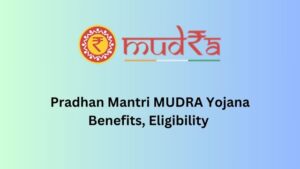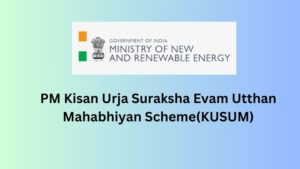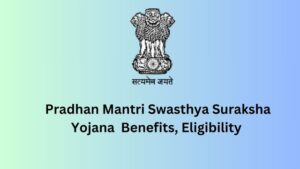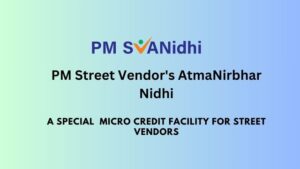Pradhan Mantri Awaas Yojana – Gramin
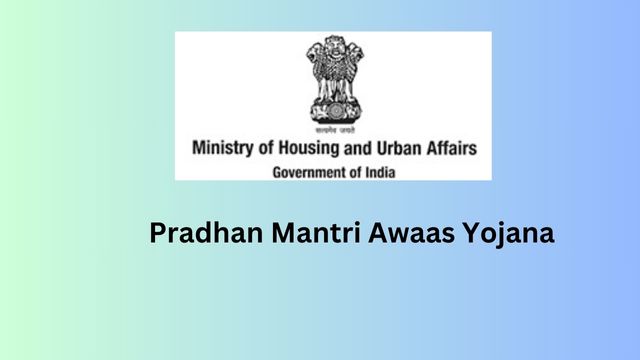
Launched on April 1st, 2016, the Pradhan Mantri Awaas Yojana Gramin (PMAY-G) stands as the centerpiece of the government’s rural development efforts, spearheaded by the Ministry of Rural Development (MoRD) and executed by the Ministry of Housing and Urban Affairs (MoHUA).
Its primary objective is to furnish a solid, habitable dwelling equipped with essential amenities to households currently residing in makeshift or deteriorating structures, as well as those without any shelter.
By tackling the dearth of rural housing, PMAY-G plays a pivotal role in fulfilling the nationwide aspiration of “Housing for All”. Each dwelling constructed under PMAY-G encompasses a minimum area of 25 square meters, with a designated space for sanitary cooking facilities.
As of September 27th, 2022, a notable milestone of 2.00 crore houses have been erected, inching closer to the overarching goal of 2.72 crores.
Identification of beneficiaries relies on parameters outlined in the Socio-Economic and Caste Census (SECC), with verification carried out by local Gram Sabhas.
Funds are disbursed directly into the Aadhaar-Linked Bank Account or Post-Office Account of the recipients, ensuring transparency and efficiency.
Benefits
- Financial aid of ₹1,20,000 per unit for plains, and ₹1,30,000 per unit for hilly, difficult, and IAP (Integrated Action Plan) districts (including Himalayan and North-Eastern states, and Union Territories of Jammu & Kashmir).
- Eligible beneficiaries can access institutional finance (loans) of up to ₹70,000 at a reduced interest rate, 3% lower, to construct permanent residences, with a maximum subsidy limit of ₹2,00,000.
- Each house must meet a minimum size requirement of 25 square meters, with a designated area for hygienic cooking.
- In alignment with the Swachh Bharat Mission-Gramin (SBM-G), beneficiaries receive up to ₹12,000 for constructing toilets.
- Under the Mahatma Gandhi National Rural Employment Guarantee Act (MGNREGA) convergence, beneficiaries are offered employment as unskilled labor (Rural Mason Training) at a rate of ₹90.95 per day for 95 days.
- Through integration with the Pradhan Mantri Ujjwala Yojana, each household is entitled to one LPG connection.
- Collaborating with various government programs, PMAY-G ensures access to piped drinking water, electricity connections, clean and efficient cooking fuel, and measures for social and liquid waste treatment.
- Payments are electronically transferred directly to Aadhaar-linked bank or post office accounts. Note: Beneficiary identification relies on the “Housing Deprivation Parameters” from the Socio-Economic and Caste Census (SECC) 2011, further validated by Gram Sabhas.
Benefits include
- Financial assistance of ₹1,20,000 per unit for plains and ₹1,30,000 per unit for hilly, difficult, and IAP districts, encompassing Himalayan and North-Eastern states, and Union Territories of Jammu & Kashmir.
- Eligible beneficiaries can secure institutional finance (loans) of up to ₹70,000 at a reduced interest rate, 3% lower, for constructing permanent residences, with a maximum subsidy limit of ₹2,00,000.
- Each dwelling must adhere to a minimum size requirement of 25 square meters, with a dedicated area allocated for hygienic cooking.
- In collaboration with the Swachh Bharat Mission-Gramin (SBM-G), beneficiaries receive up to ₹12,000 for constructing toilets.
- Through convergence with the Mahatma Gandhi National Rural Employment Guarantee Act (MGNREGA), beneficiaries can access employment as unskilled labor (Rural Mason Training) at ₹90.95 per day for 95 days.
- Integration with the Pradhan Mantri Ujjwala Yojana ensures each household is entitled to one LPG connection.
- Collaborating with various government programs, PMAY-G facilitates access to piped drinking water, electricity connections, clean and efficient cooking fuel, and initiatives for social and liquid waste treatment.
- Payments are electronically transferred directly to Aadhaar-linked bank or post office accounts. (Note: Beneficiary identification relies on the “Housing Deprivation Parameters” from the Socio-Economic and Caste Census (SECC) 2011, further validated by Gram Sabhas.)
Allocation of Targets
- For Scheduled Castes and Scheduled Tribes:
- 60% of the target assigned to each State/Union Territory (UT) should be earmarked for Scheduled Castes (SC) and Scheduled Tribes (ST), subject to the availability of eligible beneficiaries.
- Within the earmarked targets, the proportion of SC and ST beneficiaries is to be determined periodically by the respective States/UTs.
- States/UTs are permitted to exchange targets between SC and ST categories if there are no eligible beneficiaries from either group, certified as such.
- If all eligible SC and ST households are covered, State/UT targets would be allocated to beneficiaries from other categories included in the Permanent Wait List derived from the Socio-Economic and Caste Census (SECC) 2011.
- For Minorities:
- Additionally, where feasible, 15% of the total fund will be reserved for Minorities at the National Level for households.
- Allocation of targets for Minorities among the States/UTs will be based on the proportionate rural population of Minorities in each State/UT as per Census 2011 data.
- Minorities identified under Section 2(c) of the National Commission for Minorities Act, 1992, are eligible for benefits against Minority earmarks.
- For Persons with Disabilities (PwDs):
- In the framework of PMAY-G, households with any disabled member and no able-bodied adult member are given priority while allotting houses, through an additional deprivation score mechanism.
- States are encouraged to ensure that 3% of beneficiaries at the State Level are persons with disabilities, in line with the provisions of the Persons with Disabilities Act, 1995.
- Tie Breaker:
- In the event of a tie among households within a subgroup with the same deprivation score, priority will be determined based on the following parameters:
i. Households with widows and next-of-kin of members of defense/paramilitary/police forces killed in action. ii. Households with a member suffering from leprosy or cancer, and People living with HIV (PLHIV).
iii. Households with a single girl child.
iv. Beneficiary families under the Scheduled Tribes and Other Traditional Forest Dwellers (Recognition of Forest Rights) Act, 2006 (Forest Rights Act).
v. Transgender persons.Exclusions
Step 1: Exclusion of Permanent Structures
All households residing in dwellings with solid roofs and/or walls and households inhabiting homes with more than two rooms are initially eliminated from consideration.
Step 2: Automatic Exclusion
Among the remaining households, any meeting at least one of the 13 parameters listed below are automatically excluded: - Possession of a motorized two/three/four-wheeler or fishing boat.
- Ownership of mechanized three/four-wheeler agricultural equipment.
- Possession of a Kisan Credit Card with a credit limit exceeding Rs.50,000.
- Presence of a government employee within the household.
- Households with non-agricultural enterprises registered with the government.
- Any member earning more than Rs.10,000 per month.
- Payment of income tax.
- Payment of professional tax.
- Ownership of a refrigerator.
- Ownership of a landline phone.
- Possession of 2.5 acres or more of irrigated land with at least one irrigation equipment.
- Possession of 5 acres or more of irrigated land for two or more crop seasons.
- Ownership of at least 7.5 acres of land or more with at least one irrigation equipment.
Application Process
Online Application - Beneficiary Registration Manual – link
- The beneficiary registration process consists of four sections: Personal Details, Bank Account Details, Convergence Details, and Details from the Concerned Office. To successfully register or add a beneficiary, follow these steps:
- Visit the official PMAY-G website PMAY-HFA(Urban) (pmaymis.gov.in)
- Fill in the required personal details such as gender, mobile number, Aadhaar number, etc., in the designated section.
- Upload the consent form required for Aadhaar number usage.
- Click on the search button to find the beneficiary name, PMAY ID, and priority.
- Select “Select to Register”.
- The beneficiary details will be automatically generated and displayed.
- Fill in the remaining beneficiary details such as ownership type, relation, Aadhaar number, etc.
- Upload the consent form required for Aadhaar number usage on behalf of the beneficiary.
- In the next section, input the beneficiary’s account details including beneficiary name, bank account number, etc.
- If the beneficiary intends to avail a loan, select “Yes” and enter the required loan amount.
- Enter the MGNREGA job card number and Swachh Bharat Mission (SBM) number of the beneficiary in the following section.
- The details from the concerned office will be filled in the next section.
Required Documents
- Aadhaar Number: A self-attested copy of the Aadhaar Card is required. If the applicant is illiterate, a consent letter must be obtained along with the applicant’s thumbprint.
- Job Card: The job card duly registered with MGNREGA is necessary.
- Bank Account Details: Both original and duplicate copies of bank account details are needed.
- Swachh Bharat Mission (SBM) Number: This number is required for verification purposes.
- Affidavit: An affidavit stating that the beneficiaries or their family members do not own a permanent structure is essential.
